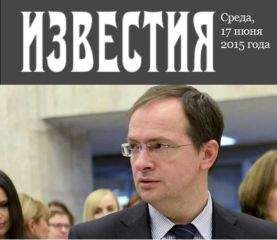Брендан Симмс - Европа. Борьба за господство
30
То есть супруг правящей королевы, Филипп, еще наследником престола женился на Марии Тюдор (Кровавой); после ее смерти он долго предлагал брак королеве Елизавете. Примеч. ред.
31
Geoffrey Parker, The grand strategy of Philip II (New Haven and London, 1998), p. 4.
32
Gábor Ágoston, ‘Information, ideology, and limits of imperial policy: Ottoman grand strategy in the context of Ottoman – Habsburg rivalry’, in Virginia H. Aksan and Daniel Goffman (eds.), The Early Modern Ottomans: remapping the empire (Cambridge, 2007), pp. 75–103.
33
Goffman, Ottoman Empire and Early Modern Europe, p. 111.
34
The Sultan’s instructions to the Moriscos and his envoy to Flanders are cited in Andrew C. Hess, ‘The Moriscos: an Ottoman fifth column in sixteenth-century Spain’, American Historical Review, 74, 1 (1968), pp. 19–20.
35
Esther-Beate Körber, Habsburgs europäische Herrschaft. Von Karl V. bis zum Ende des 16. Jahrhunderts (Darmstadt, 2002), p. 20 and passim.
36
Quoted in Lynch, Spain under the Habsburgs, pp. 74–5.
37
Aurelio Espinosa, ‘The grand strategy of Charles V (1500–1558): Castile, war, and dynastic priority in the Mediterranean’, Journal of Early Modern History, 9 (2005), pp. 239–83, especially pp. 239–41 and 258–9.
38
Federico Chabod, ‘“¿Milán o los Países Bajos?” Las discusiones en España sobre la “alternativa” de 1544’, in Carlos V (1500–1558). Homenaje de la Universidad de Granada (Granada, 1958), pp. 331–72, especially pp. 340–41. I thank Miss Carolina Jimenez Sanchez for translating this article for me.
39
Volker Press, ‘Die Bundespläne Karls V und die Reichsverfassung’, in Heinrich Lutz (ed.), Das römisch-deutsche Reich im politischen System Karls V. (Munich, 1982), pp. 55–106.
40
Alfred Kohler, Expansion und Hegemonie. Internationale Beziehungen, 1450–1559 (Paderborn, Munich, etc., 2008), pp. 371–84.
41
Olivares on Flanders is cited in Jonathan I. Israel, Conflicts of empires. Spain, the Low Countries and the struggle for world supremacy, 1585–1713 (London, 1997), pp. 67–8. For projected Spanish military expenditure in 1634 see the figures in J. H. Elliott, ‘Foreign policy and domestic crisis: Spain, 1598–1659’, in J. H. Elliott, Spain and its world, 1500–1700. Selected essays (New Haven and London, 1989), p. 130.
42
Randall Lesaffer, ‘Defensive warfare, prevention and hegemony: the justifications of the Franco-Spanish war of 1635’, Journal for International Law, 8 (2006), pp. 91–123 and 141–79. Richelieu on gateways is cited in J. H. Elliott, Richelieu and Olivares (Cambridge, 1984), p. 123.
43
Quoted in Derek Croxton, Peacemaking in Early Modern Europe. Cardinal Mazarin and the Congress of Westphalia, 1643–1648 (Selinsgrove, Pa, and London, 1999), p. 271.
44
Quoted in Stuart Carroll, Martyrs and murderers. The Guise family and the making of Europe (Oxford, 2009), p. 68.
45
Quoted in Alison D. Anderson, On the verge of war. International relations and the Jülich-Kleve succession crises (1609–1614) (Boston, 1999), p. 51.
46
Anja Victorine Hartmann, Von Regensburg nach Hamburg. Die diplomatischen Beziehungen zwischen dem französischen König und dem Kaiser vom Regensburger Vertrag (13. Oktober 1630) bis zum Hamburger Präliminarfrieden (25. Dezember 1641) (Münster, 1998).
47
Richelieu is quoted in Hermann Weber, ‘Richelieu und das Reich’, in Heinrich Lutz, Friedrich Hermann Schubert and Hermann Weber (eds.), Frankreich und das Reich im 16. und 17. Jahrhundert (Göttingen, 1968), pp. 36–52 (pp. 39 and 41).
48
Quoted in Osiander, States system of Europe, p. 28.
49
James D. Tracy, The founding of the Dutch Republic. War, finance, and politics in Holland, 1572–1588 (Oxford, 2008), pp. 5–7, 143–5, 238–41 and passim. For the connections between the Netherlands and the Empire see Johannes Arndt, Das heilige Römische Reich und die Niederlande 1566 bis 1648. Politisch-Konfessionelle Verflechtung und Publizistik im Achtzigjährigen Krieg (Cologne, 1998).
50
Rory McEntegart, Henry VIII, the League of Schmalkalden and the English Reformation (Woodbridge, 2002), pp. 11–12 and 217–18 (quotation p. 17).
51
Cited in R. B. Wernham, Before the Armada. The growth of English foreign policy, 1485–1588 (London, 1966), p. 292.
52
J. Raitt, ‘The Elector John Casimir, Queen Elizabeth, and the Protestant League’, in D. Visser (ed.), Controversy and conciliation. The Reformation and the Palatinate, 1559–1583 (Allison Park, Pa, 1986), pp. 117–45. 145
53
О нежелании Елизаветы вторгаться в Нидерланды: Simon Adams, ‘Elizabeth I and the sovereignty of the Netherlands, 1576–1585’, in Transactions of the Royal Historical Society, Sixth Series, XIV (2004), pp. 309–19. 319
54
Michael Roberts, Gustavus Adolphus (London and New York, 1992), pp. 59–72, and ‘The political objectives of Gustav Adolf in Germany, 1630–2’, in Roberts, Essays in Swedish History (London, 1967), pp. 82–110. The quotations from Gustavus Adolphus and the Rijkstag are in Erik Ringmar, Identity, interest and action. A cultural explanation of Sweden’s intervention in the Thirty Years War (Cambridge, 1996), p. 112. Oxenstierna is quoted in Peter H. Wilson (ed.), The Thirty Years War. A Sourcebook (Basingstoke and New York, 2010), p. 133.
55
‘Swedish Manifesto. 1630’, in Wilson (ed.), Thirty Years War. A Source-book, p. 122. The concerns about the Habsburgs ‘drawing nearer to the Baltic provinces’ are clearly spelled out on pp. 123–4. The ‘liberty of Germany’ is invoked in the final paragraph, p. 130.
56
Sigmund Goetze, Die Politik des schwedischen Reichskanzlers Axel Oxenstierna gegenüber Kaiser und Reich (Kiel, 1971), pp. 75–90.
57
Пожизненным диктатором (лат.). Примеч. ред.
58
Quoted in Michael Roberts, ‘Oxenstierna in Germany’, in Roberts, From Oxenstierna to Charles XII. Four studies (Cambridge, 1991), p. 26.
59
О важности для испанцев Германии: Charles Howard Carter, The secret diplomacy of the Habsburgs, 1598–1625 (New York and London, 1964), p. 58.
60
Quoted in Osiander, States system of Europe, p. 79.
61
Gülru Necipoğ lu, ‘Süleyman the Magni cent and the representation of power in the context of Ottoman – Habsburg – Papal rivalry’, The Art Bulletin, 71 (1989), pp. 401–27, especially pp. 411–12. 412
62
Goffman, Ottoman Empire and Early Modern Europe, pp. 107–8. Важность Центральной Европы и Средиземноморья: Metin Kunt and Christine Woodhead (eds.), Süleyman the Magnificent and his age. The Ottoman Empire in the Early Modern world (London, 1995), pp. 24 and 42–3. 43
63
Quoted in Karl Brandi, Kaiser Karl V. Wenden und Schicksal einer Persönlichkeit und eines Weltreiches (Munich, 1959), p. 78.
64
Quoted in John M. Headley, ‘Germany, the Empire and Monarchia in the thought and policy of Gattinara’, in Lutz (ed.), Das römisch-deutsche Reich, p. 18.
65
Henry J. Cohn, ‘Did bribes induce the German electors to choose Charles V as emperor in 1519?’, German History, 19, 1 (2001), pp. 1–27.
66
Headley, ‘Germany, the Empire and Monarchia’, in Lutz (ed.), Das römisch-deutsche Reich, pp. 15–33, especially pp. 18–19 (quotations pp. 16 and 22).
67
Matthias Schnettger and Marcello Verga (eds.), Das Reich und Italien in der Frühen Neuzeit (Berlin and Bologna, 2000). О стычке между Максимилианом и Карлом: Hermann Wies ecker, Kaiser Maximilian I. Das Reich, Österreich und Europa an der Wende zur Neuzeit (Munich, 1975) (quotation p. 50). О “мессианских” амбициях Карла: Haran, Le lys et le globe, pp. 39–40.
68
Quoted in Heinrich Lutz, ‘Kaiser Karl V., Frankreich und das Reich’, in Lutz et al., Frankreich und das Reich im 16. und 17. Jahrhundert, pp. 7–19 (quotation p. 13).
69
Quoted in William F. Church, Richelieu and reason of state (Princeton, NJ, 1972), p. 287.
70
Stella Fletcher, Cardinal Wolsey. A life in Renaissance Europe (London and New York, 2009), pp. 61–2.
71
C. S. L. Davies, ‘Tournai and the English crown, 1513–1519’, Historical Journal, 41 (1998), pp. 1–26, especially pp. 11–12.
72
Euan Cameron, The European Reformation (Oxford, 1991), pp. 99–110.
73
John W. Bohnstedt, The in del scourge of God. The Turkish menace as seen by German pamphleteers of the Reformation era (Philadelphia, 1968), pp. 12–13 and 23–5.
74
Dieter Mertens, ‘Nation als Teilhabeverheissung: Reformation und Bauernkrieg’, in Dieter Langewiesche and Georg Schmidt (eds.), Föderative Nation. Deutschlandkonzepte von der Reformation bis zum Ersten Weltkrieg (Munich, 2000), pp. 115–34, especially pp. 117–18 and 125–32. Также: Klaus Arnold, ‘“… damit der arm man vnnd gemainer nutz iren furgang haben”… Zum deutschen “Bauernkrieg” als politischer Bewegung: Wen – del Hiplers und Friedrich Weigandts Pläne einer “Reformation” des Reiches’, in Zeitschrift für historische Forschung, 9 (1982), pp. 257–313, especially pp. 296–307 on imperial reform plans.
75
Andrew Pettegree, The Reformation and the culture of persuasion (Cambridge, 2005), especially pp. 185–210; R. W. Scribner, For the sake of simple folk. Popular propaganda for the German Reformation (Cambridge, 1981); and Peter Lake and Steven Pincus (eds.), The politics of the public sphere in Early Modern England (Manchester and New York, 2007), especially pp. 1–30.
76
Diarmaid MacCulloch, Reformation. Europe’s house divided, 1490–1700 (London, 2003), especially pp. 124–5. О порожденном Реформацией ощущении уязвимости: Robert von Friedeburg, Self-defence and religious strife in Early Modern Europe. England and Germany, 1530–1680 (Aldershot, 2002).
77
Claus-Peter Clasen, The Palatinate in European history, 1555–1618 (Oxford, 1963), especially pp. 10–11; and Volker Press, ‘Fürst Christian I. von Anhalt-Bernburg, Statthalter der Oberpfalz, Haupt der evangelischen Bewegungspartei vor dem Dreissigjährigen Krieg (1568–1630)’, in Konrad Ackermann and Alois Schmid (eds.), Staat und Verwaltung in Bayern (Munich, 2003), pp. 193–216.
78
D. J. B. Trim, ‘Calvinist internationalism and the shaping of Jacobean foreign policy’, in Timothy Wilks (ed.), Prince Henry revived. Image and exemplarity in Early Modern England (London, 2007), pp. 239–58. О самом любопытном агенте “кальвинистского интернационала”: Hugh Trevor-Roper, Europe’s physician. The various life of Sir Theodore de Mayerne (New Haven, 2006).
79
Cecil on the German princes is cited in David Trim, ‘Seeking a Protestant alliance and liberty of conscience on the continent, 1558–85’, in Susan Doran and Glenn Richardson (eds.), Tudor England and its neighbours (Basingstoke, 2005), pp. 139–77 (p. 157).
80
Peter H. Wilson, ‘The Thirty Years War as the Empire’s constitutional crisis’, in R. J. W. Evans, Michael Schaich and Peter H. Wilson (eds.), The Holy Roman Empire, 1495–1806 (Oxford, 2010), pp. 95–114.
81
Heinz Duchhardt, Protestantisches Kaisertum und altes Reich. Die Diskussion über die Konfession des Kaisers in Politik, Publizistik und Staatsrecht (Wiesbaden, 1977), pp. 326–30.
82
R. A. Stradling, Spain’s struggle for Europe, 1598–1668 (London, 1994).
83
Zúñiga and Onate are quoted in Eberhard Straub, Pax et imperium. Spaniens Kampf um seine Friedensordnung in Europa zwischen 1617 und 1635 (Paderborn and Munich, 1980), pp. 116–17.
84
Brennan C. Pursell, The Winter King. Frederick V of the Palatinate and the coming of the Thirty Years War (Aldershot, 2003).
85
Thomas Brockmann, Dynastie, Kaiseramt und Konfession. Politik und Ordnungsvorstellungen Ferdinands II im Dreissigjährigen Krieg (Paderborn, 2009).
86
Heinz Duchhardt, ‘Das Reich in der Mitte des Staatensystems. Zum Verhältnis von innerer Verfassung und internationaler Funktion in den Wandlungen des 17. und 18. Jahrhunderts’, in Peter Krüger (ed.), Das europäische Staatensystem im Wandel. Strukturelle Bedingungen und bewegende Kräfte seit der Frühen Neuzeit (Munich, 1996), pp. 1–9; and Christoph Kampmann, Europa und das Reich im Dressigjährigen Krieg. Geschichte eines europäischen Kon ikts (Stuttgart, 2008).
87
Quoted in R. J. Knecht, The Valois. Kings of France, 1328–1589 (London, 2004), p. 144.
88
Maurice Keen, ‘The end of the Hundred Years War: Lancastrian France and Lancastrian England’, in Michael Jones and Malcolm Vale (eds.), England and her neighbours, 1066–1453 (London and Ronceverte, W. Va, 1989), pp. 297–311, especially pp. 299–301.
89
О существовании публичной сферы до изобретения книгопечатания и значимости английских войн: Clementine Oliver, Parliament and political pamphleteering in fourteenth-century England (Woodbridge, 2010), p. 4 and passim.




